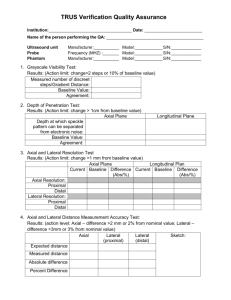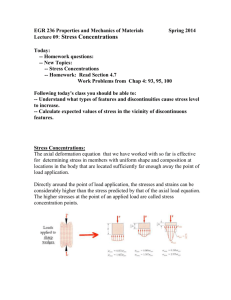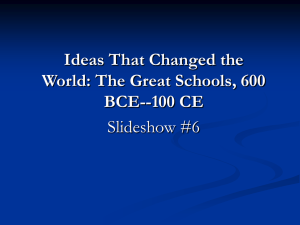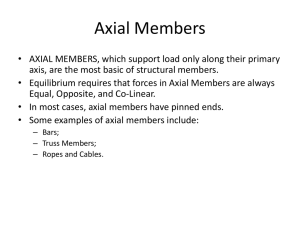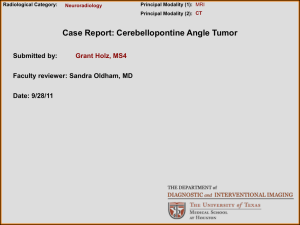The Axial Age
advertisement
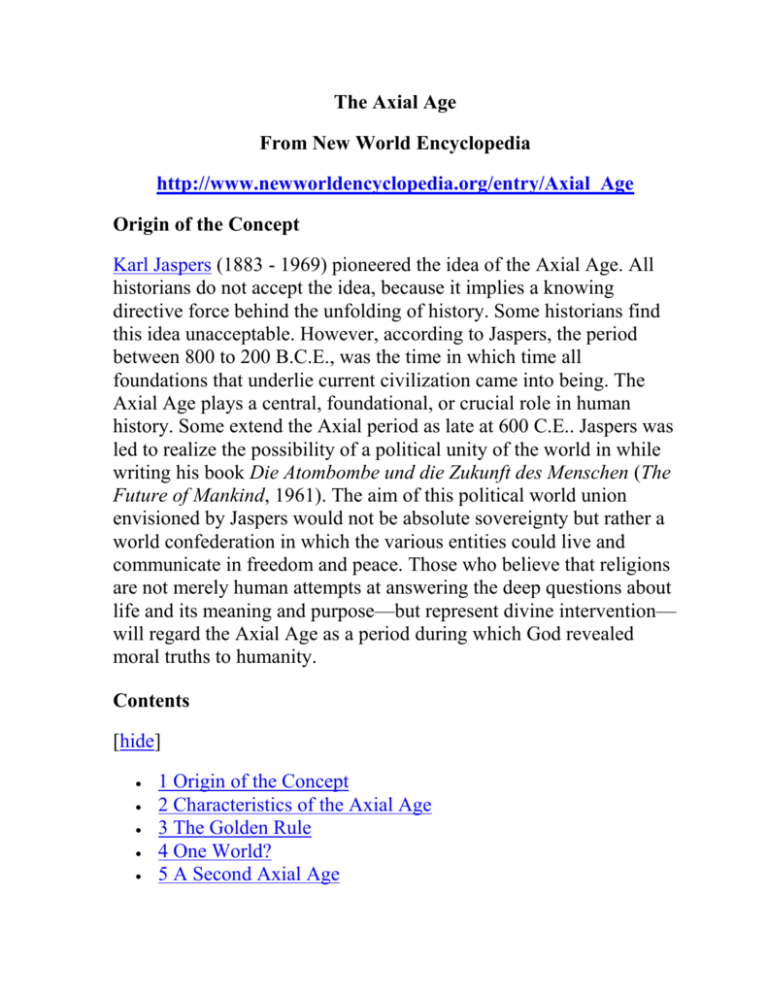
The Axial Age From New World Encyclopedia http://www.newworldencyclopedia.org/entry/Axial_Age Origin of the Concept Karl Jaspers (1883 - 1969) pioneered the idea of the Axial Age. All historians do not accept the idea, because it implies a knowing directive force behind the unfolding of history. Some historians find this idea unacceptable. However, according to Jaspers, the period between 800 to 200 B.C.E., was the time in which time all foundations that underlie current civilization came into being. The Axial Age plays a central, foundational, or crucial role in human history. Some extend the Axial period as late at 600 C.E.. Jaspers was led to realize the possibility of a political unity of the world in while writing his book Die Atombombe und die Zukunft des Menschen (The Future of Mankind, 1961). The aim of this political world union envisioned by Jaspers would not be absolute sovereignty but rather a world confederation in which the various entities could live and communicate in freedom and peace. Those who believe that religions are not merely human attempts at answering the deep questions about life and its meaning and purpose—but represent divine intervention— will regard the Axial Age as a period during which God revealed moral truths to humanity. Contents [hide] 1 Origin of the Concept 2 Characteristics of the Axial Age 3 The Golden Rule 4 One World? 5 A Second Axial Age 6 Theological Aspects 7 Historiographical Implications 8 References 9 Internet resources 10 Credits Characteristics of the Axial Age Jaspers was struck by the fact that so many of the great philosophers and religious leaders including Confucius, Buddha, Lao Tzu, Zarathustra (of the Mesopotamians), Moses flourished at roughly the same time, as if something parallel was happening in the world, although people were unaware that similar or complimentary ideas were being developed at the same time. This period, Jaspers (1951) suggested, gave birth to everything that, since then, we have been able to realize. "Fundamental ideas," he said, "rose everywhere in the Axial Age" (135). He wrote: ... If there is an axis in history, we must find it empirically in profane history, as a set of circumstances significant for all men, including Christians. It must carry conviction for Westerner, Asiatics, and all men, without the support of any particular content of faith, and thus provide all men with a common historical frame of reference. The spiritual process which took place between 800 and 200 B.C.E. seems to constitute such an axis. It was then that the man with whom we live today came into being. Let us designate this period as the "axial age." Extraordinary events are crowded into this period. In China lived Confucius and Lao Tse, all the trends in Chinese philosophy arose... In India it was the age of the Upanishads and of Buddha; as in China, all philosophical trends, including skepticism and materialism, sophistry and nihilism, were developed. In Iran Zarathustra put forward his challenging conception of the cosmic process as a struggle between good and evil; in Palestine prophets arose: Elijah, Isaiah, Jeremiah, Deutero-Isaiah; Greece produced Homer, the 2 philosophers Parmenides, Heraclitus, Plato, the tragic poets, Thucydides and Archimedes. All the vast development of which these names are a mere intimation took place in those few centuries, independently and almost simultaneously in China, India and the West… This is also the time of the great empires of antiquity (the Romans, the Macedonians, the Thracian Empires), which disseminated culture, legal frameworks, and a sense of belonging to larger realities across tribal and ethnic boundaries. Jaspers saw this period as a particularly intense time of intellectual and religious development that continues to resonate in thought and society. The questions that the great seminal personalities of philosophy and religion tried to answer— such as the meaning and purpose of life, the meaning of suffering, how to distinguish good from evil—were of universal interest and their answers were meant for people everywhere, not just for their own clan or even just for their own time. The legacy of these great philosophers and teachers was so radical that it affected all aspects of culture, transforming consciousness itself. It was within the horizons of this form of consciousness that the great civilizations of Asia, the Middle East, and Europe developed. The ‘Classic Age’ saw the emergence of democracy in Athens, the flowering of philosophy (Socrates, Plato, Aristotle in Greece), and great artistic achievements. Some argue that wherever people live today, they are influenced by the structure of consciousness that was shaped in this Axial Age. The ancient Olympic games saw the birth of competitive sport and of the idea that sport can help to promote generosity, understanding and international co-operation and concern for human dignity and peace. In the eighteenth and nineteenth centuries, in Europe and North America, this period was romanticized but Hippocrates and Galen still form the basis of medical science. Virgil (17 B.C.E. - 19 C.E.) spoke of a Golden Age when people had lived in utopia, but also believed that there are recurrent cycles of history. The Golden Rule 3 The idea that we should treat others as we would like them to treat us, known as the Golden Rule, is an ethic that emerged almost universally during the Axial Age. For example, Confucius said: "What I do not wish others to do to me, that also I wish not to do to them" (Analects, 5.11) while Zoroaster (628-551 B.C.E.) said, "That which is good for all and any one, for whomsoever—that is good for me...what I hold good for self, I should for all. Only Law Universal is true Law" (Gathas, 43.1). The book of Leviticus says, "You shall love your neighbor as yourself" (Lev. 19: 18). One World? The Axial Age may have started earlier than Jaspers thought. He was not aware of the clay tablets in Babylon which we now have that detail great activity in what might be called pre-axial times—or perhaps point to an earlier beginning of that period. Some scholars believe that similarity of ideas and similar developments are indicative of an early global civilization that existed, with contact and travel across much more of the globe than we usually think occurred at this early period. Acharya S (1999) offers arguments in her controversial book, drawing on archeology. Phoenician ships likely circled the globe at the time of Solomon (see Heyerdahl, 1978; Gordon, 1972). Gordon (1908-2001), a Jewish archaeologist and Biblical scholar (the first U.S.-born Jew to hold such a position at an American university), argued that Jews had visited the Americas in ancient times as they participated in these pioneer journeys to the farAtlantic coastline. Jews, Phoenicians, and others, according to Gordon, had crossed the Atlantic in antiquity. He argued for a closer connection and considerable exchange between the Hebrew's world and that of the ancient Aegean world. Judaism can thus be regarded as carrying a vestige of this much larger ancient world in which Israel was situated. The library at Alexandria may have contained other information about those ancient days that has been lost for modern civilization. Babylonian writing was used internationally and even Egyptian traders and statements communicated through this medium. 4 If this is true, then globalization is not a new phenomenon but the revival of an old one. A Second Axial Age What some say caused the first axial shift was the collision of tribal cultures with face-to-face relations because of the rise of commerce and urban life. To survive, such civilizations were forced to develop ethical systems of thought that could transcend the informal rules of the various tribes. This process formed in various cultural spheres, for example, in the Babylonian Empire with the Hammurabi code and later among the Hebrews with the Mosaic code. Today, Ewart Cousins (1994) and Leonard Swidler, among others, are writing of a second axial age. Their argument is that towards the end of the twentieth century humankind started to experience what Hans Kung calls a Macro-Paradigm-Shift—humanity now understands the world and human responsibility in global, not local terms. People understand themselves, their relationship with others differently, which in turn releases new energy and passion to work for a better world. This new self-consciousness is also open to the reality of the spiritual dimension, to the sanctity of life. The world is no longer a resource to be exploited, but one that must be preserved. Cousins and Swidler argue that this paradigm shift is more radical than others that have occurred in history and that its profundity compares with the shift that caused the start of the first Axial Age. The contemporary transformative shift in consciousness is of a magnitude that compares to that the Axial Period, hence we can speak of a second Axial Age. Swidler argues that at the start of the third millennium, humanity is finally leaving behind the monologue that has dogged human history and is entering the Age of Dialogue. Humankind's consciousness is becoming increasingly global. In this new age, dialogue on a global basis is now not merely a possibility but is an absolute necessity. Swidler argues that humankind is faced with two choices: Dialogue or Death. 5 The second axial shift, then, represents the collision of earlier cultural spheres, each of which imposed their own monologues onto the world. In effect, this process has resulted in globalization - a single technology now circles the world. The resulting globalization has forced the development of an ethical system for a unified world, as represented by the movement for a global ethic spearheaded by Hans Kung (1993) and Swidler. Swidler argues that the move towards dialogue and away from monologue is the most important, radical shift of all and that it is unique in human history. Standing, he says, in consciousness of this new perspective, everything becomes different, and with William Shakespeare in the Tempest we should proclaim, “What a brave new world that hath such creatures in it!” (Act 4, Scene 1). Others point out that while the first Axial Age saw the emergence of a concern for justice and of a more universal outlook, transcending tribe it nonetheless was a patriarchal, male-dominated era. Buddha, for example, had to be persuaded to allow women to join his community and encumbered them with many more precepts than he did men. Aristotle took it for granted that women were subordinate to men and offered what he saw as a scientific explanation for this. He argued that women's deliberative capacity is weak and therefore easily overruled. The chief virtue of women in classical Athens was said to be their silence and submission. Members of the Fiminenza Network argue that the correct balance between the masculine and the feminine was one of the victims of the first Axial Age and that this is being corrected in the current age, with women being valued for their ability to care, to nurture and for their affinity towards the spiritual (see Hannon). Theological Aspects Much of the thinking of the Axial age was about the meaning and purpose of life, and focused on the identity of the individual rather than on the 'tribe', although not exclusively. However, in the Indian 6 Upanishads the atman, the transcendent center of the self, was of central concern while Buddha charted the way of individual enlightenment; the Jewish prophets preached moral responsibility individuals as well as for society. Confucius was concerned with the ideal, humane individual as the basic building blocks of a just society. A religious or theological interpretation of the Axial Age might posit a divine or supernatural source for these teachings of ethical and individual moral responsibility. Historiographical Implications Historians who are skeptical about positing parallel developments or archetypes tend to dismiss the idea of an Axial Age. However, the concept resonates with several approaches to historiography, such as 'Big History,' 'World History' (interested in processes that have drawn people together), and the 'Annales School' approach, with its interest in long term historical structures ((la longue durée) over events. In his book, Socrates, Buddha, Confucius, Jesus, Jaspers described these four as 'paradigmatic individuals' and pointed out (88) that their understanding of love (loving your neighbor) was universal. References Cousins, Ewert. Christ of the 21st Century Rockport, NY, Continuum, 1994 ISBN 0826406998 Gordon, Cyrus H. Before Columbus: Links Between the Old World and Ancient America. New York: Crown Publishers, 1971. ISBN 0517504413 Hannon, Anna. “Introducing Feminenza - A new international network for women,” Topaz Magazine. http://www.templatenetwork.org/topaz/04/en/04.html Heyerdahl, Thor. Early Man and the Ocean: The Beginning of Navigation and Seaborne Civilizations. London: George Allen & Unwin, 1978. ISBN 0385127103 7 Jaspers, Karl. Way to Wisdom: An Introduction to Philosophy. New Haven, CT: Yale University Press, 1951. ISBN 0300001347 Jaspers, Karl. Socrates, Buddha, Confucius, Jesus: From the Great Philosophers (vol. 1). New York: Harvest Books, 1966. ISBN 0156835800 Jaspers, Karl. The Origin and Goal of History. Westport, CT: Greenwood Press Reprint, 1977. ISBN 0837189837 Kung, Hans. Global Responsibility: In Search of a New World Ethic. New York: Continuum, 1993. ISBN 0826406238 S, Acharya. The Christ Conspiracy: The Greatest Story Ever Told. Kempton, IL: Adventures Unlimited, 1999. ISBN 0932813747 Swidler, Leonard. Death or Dialogue: From the Age of Monologue to the Age of Dialogue. Trinity, 1990. ISBN 0334024455 Swidler, Leonard. "Towards A Universal Declaration of a Global Ethic." http://astro.temple.edu/~dialogue/Center/intro.htm Swidler, Leonard. "A Vision for the Third Millenium: The Age of Global Dialogue." http://hiphi.ubbcluj.ro/JSRI/html%20version/index/no_1/leonar dswidler-articol1.htm Internet resources http://classes.seattleu.edu/religious_studies/trst267/Chan/General%20 Course%20Folder/Lectures/Axial%20Age1.html http://campus.northpark.edu/history/WebChron/World/Axial.html Credits This article began as an original work prepared for New World Encyclopedia by Clinton Bennett and is provided to the public according to the terms of the New World Encyclopedia:Creative 8 Commons CC-by-sa 3.0 License (CC-by-sa), which may be used and disseminated with proper attribution. Any changes made to the original text since then create a derivative work which is also CC-bysa licensed. To cite this article click here for a list of acceptable citing formats. Note: Some restrictions may apply to use of individual images which are separately licensed. 軸心世紀(Axial Age 或 Axial Era)是德國哲學家卡爾·雅士培在 《现时代的人》中提出的哲學發展理論。他認為,當時世上主要 宗教背後的哲學都在公元前 1 千年的 600 年間發展起來,大約從 公元前 8 世紀到前 2 世紀之間。在這期間,不論是中國、印度及 西方,都有革命性的思潮湧現[1]。在中国,轴心文明的标志就是 孔子(所谓“天不生仲尼,万古如长夜”)及其儒家学说,基本上 是一些伦理纲常、道德说教。 轴心时代中国的圣人是孔子,西 方在这个时期则是亚里士多德,而印度文明则对应的是释迦摩 尼。台灣學者陸達誠在《第五向度》的書評中指:「那時出現的 偉大宗教人物和哲學家便是宇宙對人的靈性需求的回應,一面把 人從消極面相(罪惡,自私)中救拔出來,一面使人超越小我實 現真我。」 9

